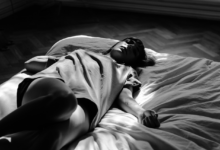What Are Some Organizations That Elevated Clan Kilts?

Clan kilts are more than just traditional Scottish garments; they are a powerful symbol of heritage, identity, and pride. Worn by generations of Scots and those of Scottish descent, clan kilts carry with them a rich history that connects individuals to their ancestral roots. Each kilt is woven from tartan patterns unique to specific clans, making it a distinctive representation of one’s lineage. Over the years, several organizations have played a pivotal role in preserving, promoting, and elevating the tradition of clan kilts. From clan societies dedicated to maintaining historical records and organizing cultural events to renowned kiltmakers who craft these garments with unparalleled skill, these groups ensure that the significance of clan kilts endures in the modern world. They not only keep the tradition alive but also bring it into contemporary fashion, making it relevant to new generations. Whether you’re looking to honor your Scottish heritage, participate in cultural celebrations, or simply appreciate the craftsmanship of these iconic garments, understanding the organizations behind clan kilts offers deeper insight into their enduring legacy. This article explores the key players that have significantly contributed to the elevation of clan kilts, ensuring their continued relevance and reverence.
The Role of Clan Societies
Clan societies are at the heart of preserving Scottish heritage, and they play a crucial role in promoting the use and understanding of clan kilts. These organizations are often founded and run by members of the clans they represent, with the primary goal of fostering a sense of community and continuity among clan members.
1. Clan Societies and Their Contributions: Clan societies work to preserve and promote the history and traditions of specific Scottish clans. They often organize events such as clan gatherings, Highland games, and cultural festivals where members can connect, celebrate their shared heritage, and wear their clan kilts with pride. These societies also provide resources for those interested in learning about their ancestry, including information on the history of their clan’s tartan.
For example, the Clan MacLeod Society and the Clan Donald Society are two of the most prominent clan organizations that have made significant contributions to the preservation of clan heritage. These societies not only maintain and promote their respective clan traditions but also support the production and use of clan kilts by working with weavers and kiltmakers to ensure the availability of authentic clan tartans.
2. Promoting Tartan Education: Many clan societies take an active role in educating the public about the significance of tartans and clan kilts. They often publish newsletters, books, and online resources that delve into the history and meaning behind their clan’s tartan. This educational outreach helps to keep the knowledge of tartans and clan kilts alive for future generations, ensuring that these symbols of Scottish heritage are not lost.
Kilt makers & Weavers
The art of kiltmaking is a time-honored tradition that has been passed down through generations. Kiltmakers and weavers are the craftsmen behind the creation of clan kilts, and their work is essential in maintaining the quality and authenticity of these garments.
1. Leading Kiltmakers Specializing in Clan Tartans: Some kiltmakers have earned reputations for their dedication to producing high-quality clan kilts. These artisans often have deep roots in Scottish culture and a profound understanding of the significance of the garments they create. Companies like Kinloch Anderson, Geoffrey (Tailor) Highland Crafts, and Lochcarron of Scotland are renowned for their expertise in kiltmaking and their commitment to preserving the tradition of clan kilts. These kiltmakers offer a range of services, from bespoke kilt tailoring to the production of clan tartan fabric. They work closely with clan societies and individual customers to ensure that each kilt they produce is not only a garment but a symbol of heritage and pride.
2. Traditional Weaving Techniques: The authenticity of a clan kilt largely depends on the quality of the tartan fabric used, which is why traditional weaving techniques are so important. Many Scottish weavers continue to use age-old methods to produce tartan fabric, ensuring that each kilt is made from material that is as close to the original as possible. This dedication to traditional craftsmanship is what sets authentic clan kilts apart from mass-produced imitations. Companies like Marton Mills and House of Edgar are known for their high-quality tartan fabrics, which are woven using traditional techniques. These weavers often work in collaboration with kiltmakers to produce custom tartans for clans or individuals, ensuring that the patterns are accurate and the fabric is of the highest quality.
3. Collaboration with Clans: In some cases, kiltmakers and weavers collaborate directly with clans to create bespoke tartans that are unique to that clan. This process often involves extensive research into the clan’s history and symbols, followed by the design of a tartan that reflects the clan’s identity. Once the design is finalized, the weavers produce the fabric, which is then used by kiltmakers to create the finished kilt. This level of collaboration helps to maintain the authenticity and integrity of clan kilts.
Cultural and Heritage Organizations
In addition to clan societies and kiltmakers, various cultural and heritage organizations have played a crucial role in elevating the status of clan kilts. These organizations work to preserve Scotland’s rich history and promote its cultural traditions, including the wearing of clan kilts.
1. The Scottish Tartans Authority: The Scottish Tartans Authority (STA) is one of the most important organizations dedicated to the preservation and promotion of tartans. Founded in 1996, the STA serves as a global repository of tartan designs and is responsible for maintaining the Scottish Register of Tartans, an official database of registered tartans. The STA provides valuable resources for those interested in learning about tartans, including the history and significance of different patterns. It also works with kiltmakers, weavers, and clan societies to ensure that the production and use of tartans remain true to their historical roots. Through its efforts, the STA has helped to elevate the status of clan kilts by promoting the importance of authenticity and tradition.
2. The National Trust for Scotland: The National Trust for Scotland (NTS) is another organization that has contributed to the preservation of Scotland’s cultural heritage, including clan kilts. The NTS manages numerous historical sites, many of which have ties to specific clans. By preserving these sites and promoting their history, the NTS helps to keep the stories of Scotland’s clans alive. In addition to its work in preserving historical sites, the NTS also organizes events and educational programs that celebrate Scottish culture. These activities often include demonstrations of traditional crafts, such as kiltmaking, and provide opportunities for people to learn about the significance of clan kilts in Scottish history.
3. Highland Games & Heritage Festivals: Highland games and heritage festivals play a significant role in promoting clan kilts and Scottish culture. These events, which are held worldwide, bring together people of Scottish descent and others who are interested in Scottish traditions. Participants and spectators alike wear clan kilts, creating a vibrant display of tartans and fostering a sense of community and pride. Organizations that organize these events, such as the Scottish Highland Games Association, work to ensure that the games remain true to their roots. By providing a platform for the celebration of clan culture, these organizations help to elevate the status of clan kilts and keep the tradition alive for future generations.
The Influence of Modern Organizations
While traditional organizations have been instrumental in preserving clan kilts, modern companies and brands have also played a significant role in bringing these garments into the contemporary fashion world. These organizations are often more focused on innovation and global appeal, but they remain rooted in the tradition of clan kilts.
1. Contemporary Kilt Brands: Modern kilt brands like 21st Century Kilts and Howie Nicholsby have reimagined the traditional kilt for a global audience. These brands offer a range of kilt styles, from traditional clan kilts to modern interpretations that incorporate new materials and designs. By making kilts more accessible and appealing to a broader audience, these brands have helped to elevate the status of clan kilts in the fashion world.
2. The Role of Social Media & Fashion Influencers: Social media and fashion influencers have also played a role in popularizing clan kilts. Platforms like Instagram and YouTube provide a space for people to showcase their kilt outfits, share styling tips, and celebrate their Scottish heritage. Influencers who embrace clan kilts and share their experiences with their followers help to raise awareness of these garments and inspire others to wear them. Modern kilt brands and influencers often collaborate, further promoting the use of clan kilts in everyday fashion. This collaboration between traditional craftsmanship and modern marketing has introduced clan kilts to new generations and markets, ensuring their continued relevance.

The Rise of the US Kilts
While clan kilts are deeply rooted in Scottish history, their influence has spread far beyond the borders of Scotland, particularly to the United States. U.S. kilts have become a significant part of Scottish-American culture, allowing individuals to celebrate their heritage and connect with their ancestral roots in a meaningful way. The growing popularity of U.S. kilts can be attributed to several factors, including the active Scottish diaspora, the widespread celebration of Highland games and Celtic festivals across the country, and the increasing interest in genealogy and cultural preservation. American kiltmakers have emerged as key players in this movement, adapting traditional kilt-making techniques to cater to a diverse audience while maintaining the authenticity and craftsmanship associated with Scottish kilts. Companies such as US Kilts have gained recognition for their high-quality, custom-made kilts, offering a wide range of tartans that reflect both Scottish clans and American pride. These U.S. kiltmakers not only produce traditional clan kilts but also create contemporary designs that appeal to a broader audience, including military and firefighter kilts that honor service and bravery.
Moreover, US kilts have found a place in modern fashion, with people wearing them at weddings, cultural events, and even in everyday life. The fusion of traditional Scottish elements with American culture has given rise to a unique expression of identity that resonates with many. This growing trend underscores the enduring appeal of kilts and the importance of cultural heritage in shaping individual and collective identities across the Atlantic.
Supporting Clan Kilt Heritage
For those who want to support the heritage of clan kilts, there are several ways to get involved with the organizations mentioned in this article.
1. Joining Clan Societies: Joining a clan society is a great way to connect with others who share your heritage and to participate in events that celebrate your clan’s history. Many clan societies offer memberships that provide access to exclusive events, newsletters, and resources related to your clan’s tartan and history.
2. Supporting Traditional Kiltmakers and Weavers: When purchasing a kilt, consider buying from traditional kiltmakers and weavers who prioritize authenticity and craftsmanship. Supporting these artisans ensures that the skills and traditions associated with kiltmaking continue to be passed down through generations.
3. Participating in Heritage Events: Attending Highland games, cultural festivals, and other heritage events is another way to support the tradition of clan kilts. These events offer opportunities to learn more about your heritage, meet others who share your interests, and proudly wear your clan kilt.
4. Donating to Cultural Organizations: If you’re passionate about preserving Scottish heritage, consider donating to organizations like the Scottish Tartans Authority or the National Trust for Scotland. Your support helps these organizations continue their work in preserving and promoting the history and culture of Scotland, including the tradition of clan kilts.
Conclusion
Clan kilts are more than just pieces of clothing; they are symbols of heritage, pride, and identity. The organizations that have elevated clan kilts—from clan societies to kiltmakers, cultural institutions, and modern brands—have played a crucial role in preserving and promoting this rich tradition. By supporting these organizations and embracing the heritage they represent, you can help ensure that the tradition of clan kilts continues to thrive for generations to come. Whether through wearing your clan kilt with pride, participating in heritage events, or supporting traditional artisans, there are many ways to contribute to the ongoing legacy of clan kilts.





